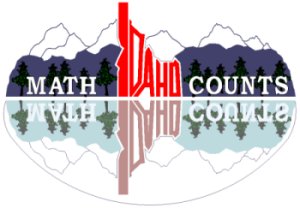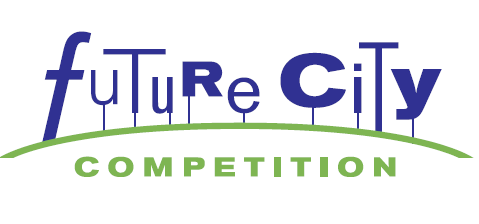|












| |
The next edition of the ISPE Friday Update
will be January 11, 2008.
Warmest wishes for a peaceful and happy holiday season!
Idaho Society of Professional Engineers
Friday Update – 12/21/07
UPCOMING EVENTS:
 | January 12, 2008 –
Idaho Regional Future City
Competition - Boise |
 | January 22, 2008 -
ISPE Southwest Chapter Noon Meeting -
Washington Group International - Training Room, Boise |
 | February 2, 2008 -
ISPE Northern Chapter
MATHCOUNTS Competition, Lewiston |
 | February 5, 2008 -
ISPE Magic Valley Chapter
MATHCOUNTS Competition, Twin Falls |
 | February 9, 2008 - ISPE
Southeast Chapter MATHCOUNTS Competition - Pocatello |
 |
February 9, 2008 -
ISPE Southwest Chapter MATHCOUNTS Competition,
Boise
|
 |
February 12, 2008 -
ISPE Northern Chapter
MATHCOUNTS Competition, Coeur d'Alene
|
 |
February
17 – 23, 2008 –
National Engineers Week |
 | February 21, 2008 – ISPE Southwest Chapter EWeek
Luncheon – Doubletree Riverside, Boise |
 | March 8, 2008 -
State MATHCOUNTS Competition,
Boise
|
 | May 9, 2008 -
National
MATHCOUNTS Competition - Denver, CO
|
 | June 6, 2008 - ISPE
2008 Annual Meeting - Red Lion Hotel Boise Downtowner, Boise
|
IDAHO PE REVIEW SPRING 2008
Presented by
University of Idaho College of Engineering, Boise
The University of Idaho College of Engineering once again presents the PE
Review for Civil and Mechanical Engineers.
Dates: January 22 through April 8, 2008
Times: Tuesday Evenings from 6pm-9pm
Disciplines: Civil and Mechanical
Engineering
Cost: $600 per person
To Register: Contact Paula Peterman at
364-6188 or paulap@uidaho.edu
FEDERAL STORM WATER AND WETLAND
REGULATION WORKSHOPS
ISPE SINCERELY APPRECIATES THE SUPPORT OF ALL OF OUR
CURRENT SUSTAINING
ORGANIZATIONS:
AHJ Engineers, PC
B & A Engineers, Inc
Briggs Engineering Inc
Delta Engineering Group
Elkhorn Engineers
G & S Structural Engineers
J.M. Miller Engineering, Inc
J-U-B Engineers, Inc
Kittelson & Associates Inc
Land Solutions, Land Surveying & Consulting
Mason & Stanfield, Inc
Materials Testing & Inspection
MWH
Progressive Engineering Group, Inc
Quadrant Consulting, Inc
Rational Technology of Idaho, LLC
Riedesel Engineering, Inc
Schiess & Associates
Stapley Engineering
Terracon
TerraGraphics Environmental Engineering, Inc
Walker Engineering
Please consider joining these great companies in
becoming an
ISPE Sustaining Organization. ISPE offers the Sustaining
Organization category of membership to enhance the visibility of your commitment
to ISPE and the engineering profession. Your membership will allow us to better
serve the engineering community through promoting engineering and ethics, and
supporting the needs of the engineer including professional development.
If you are interested in becoming a
Sustaining Organization, please
contact the ISPE office at
ispe@idahospe.org.

MATHCOUNTS PROBLEM OF THE WEEK
Can you solve this MATHCOUNTS problem? The answer will appear in next week's
edition of the Friday Update!
Penny Harvest
On December 10th, Common Cents unveiled this year’s Penny Harvest
collection of 100 million pennies. Collected by children, the money will be
distributed to charities at the children’s discretion. 536 non-profits have
already received money and/or time from Penny Harvest this year.
Prior to 1982 pennies had a mass of 3.1 grams, however during 1982 they changed
the constitution of the pennies, which changed the mass of pennies to 2.5 grams
each. If the Penny Harvest display of 100 million pennies contained only pennies
made during 1958 or after, and there are an equal number of pennies from each of
the years 1958 through 2007, inclusive, what is the mass in grams of the 100
million pennies in the display? Assume that each penny from 1982 or after has a
mass of 2.5 grams.
--------------------------------------------------------------------------------
In order to perform the enormous feat of getting 100 million pennies into
Rockefeller Center, in the middle of New York City, during the holiday season,
many volunteers worked many hours. One hundred volunteers spent an entire night
unloading 30-lb bags of pennies from crates and placing them next to the
display. At daybreak, another group of volunteers took over and began pouring
the bags of pennies into the display. Simply pouring the coins from their
transport bags into the display took 100 volunteers 3 hours to complete. If each
volunteer poured the same number of penny bags into the display, based on the
calculation from the previous question, how many bags did each person pour?
Express your answer as whole number. (Note: 1 lb = 454.59 grams)
--------------------------------------------------------------------------------
The pennies are poured into a display area that is 30 ft-by-165 ft. Given that
each penny is 0.061 inches thick and has a diameter of 0.75 inches, if the
pennies were first melted down and then poured, how many feet deep would the
melted penny mixture be in the display? Express your answer as a decimal to the
nearest hundredth.
--------------------------------------------------------------------------------
When Common Cents is ready to pick up the coins and distribute the money to
charities, they use a special vacuum to suck up the coins. The vacuum sucks up
the coins at a rate of $1000.00 per minute. At this rate how many hours does it
take to suck up all of the coins. Express your answer as a mixed number.
Answer to last week’s MATHCOUNTS problem:
Since we are looking for a percent of change, we will first have to find the
actual amount of increase from last year to this year.
10,428 – 9532 = 896
Now we’ll divide the actual change by the original number of kids on the “good”
list and multiply by 100 to find the percent.
(896 ÷ 9532) × 100 = 9% to the nearest whole number.
-------------------------------------------------------------------------------
In order to find an average we need to first figure out how many presents are
being distributed to kids on the street, in total.
(3 kids)(1 present) + (8 kids)(2 presents) + (9 kids)(3 presents) + (5 kids)(4
presents) + (3 kids)(5 presents) = 81 presents
We also need to know the total number of kids living on that street.
3 + 8 + 9 + 5 + 3 = 28 kids
Now we’ll divide the total number of presents by the number of kids on that
street.
81 ÷ 28 = 2.9 presents per kid, to the nearest tenth.
-------------------------------------------------------------------------------
First we need to figure out the diameter of Santa’s belly so we know how long
the shortest side of the chimney has to be.
C = 2πr
58 = 2πr
r = 9.231
If his radius is 9.231, Santa’s diameter is 18.462 inches.
The shortest side of the chimney must be at least 18.462 inches, therefore the
long side must be at least 36.924 inches.
The smallest possible dimensions of Bryan’s chimney are 18.5 inches by 36.9
inches, to the nearest tenth.
If you want to see last week's problem again, click
http://www.mathcounts.org/webarticles/anmviewer.asp?a=1137&z=110
Idaho Society of Professional Engineers
PO Box 170239
Boise, ID 83717-0239
208-426-0636
Fax: 208-426-0639
E-Mail: ispe@idahospe.org
Web Site: www.Idahospe.org
| |

ISPE
MATHCOUNTS
Program

National Engineers Week - Future City Competition

Board of Professional Engineers and
Professional Land Surveyors
--News
Bulletins
--Meeting
Minutes


|
 Idaho
Society of Professional Engineers
Idaho
Society of Professional Engineers